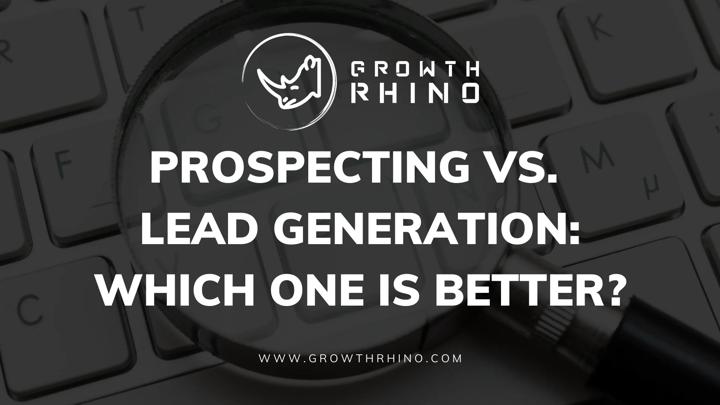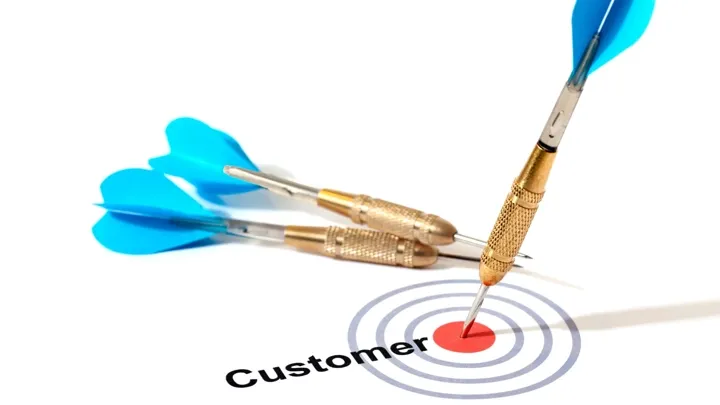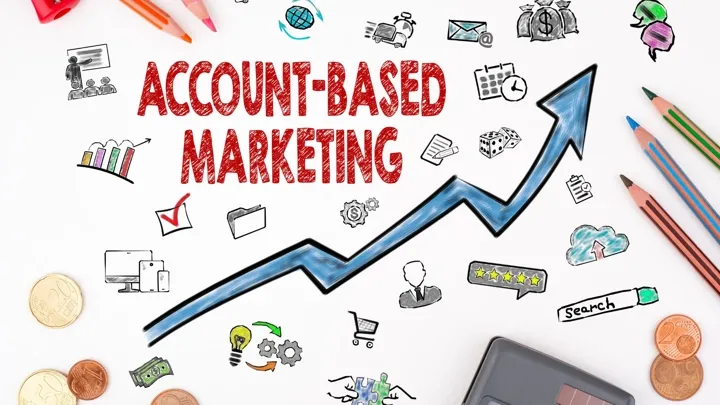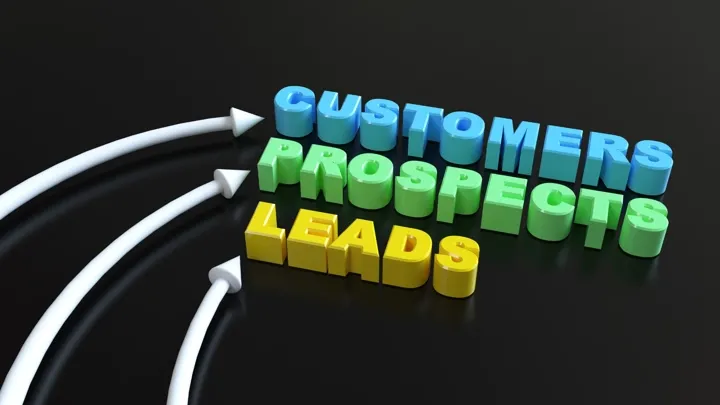
In the sales and marketing world, the terms “prospecting” and “lead generation” are often used interchangeably. Actually, they are different from each other but have a common goal of bringing in qualified leads. Both concepts use different methods to accomplish this goal, by which depending on specific situations, one can be more effective than the other. So having a clear understanding of the basics is important.
Let us look at how these two business-growth methods differ from each other. First, let’s start with the difference between a lead and a prospect.
What Is a Lead?
A lead is essentially a potential customer. The definition of a lead can be categorized into two different types depending on their action. These are the following:

- The person or company has expressed some kind of interest in your company and its work, albeit a low interest level.
- The person or company has given their communication details to you. More often, these details include their name, email address, and phone number, if any.
There is an alternative definition to a lead, wherein they do not provide any contact details to you but show some healthy interest in your product or service after you directly reach out to them.
What Is a Prospect?
A sales prospect is a person who ideally meets all the given requirements to qualify as a perfect customer. The person does not essentially need to provide you with their contact details or other identifying information to be a prospect. Neither do they have to show any interest in your company and its products. In short, a sales prospect comes out from a random search, and they qualify in all the possible criteria to be a customer. Prospects can also be shortlisted from the list of leads prepared by the marketing department.
What Is Lead Generation?
Marketing plays an important role in generating leads through different methods, such as events or other data-driven branding methods. Lead generation is the process of converting a potential customer into leads by convincing them to give you their contact details. This is generally done by creating a lead generation funnel, which includes creating a lead magnet followed by a landing page for it, and then driving traffic to that landing page. This way, the leads that have already communicated or shown interest in the company in some way or another can respond more to cold calls or emails from a sales rep.
Being within the marketing department’s realm, lead generation is often termed as a “long-term strategy” that requires building extensive brand awareness and engagement with the potential customers with the help of blogs, webinars, YouTube videos, eBooks, and so much more. These events directly collect the contact information of the participants and are thereby categorized into leads. The entire process is based on a give-and-take strategy where you will have to give something super valuable to the people in order to get their contact details.
The market for lead generation is way more expansive than prospecting since it uses a one-to-many approach for collecting lead information.
What Is Prospecting?
Prospecting is done by the sales department of a company and is way more complex than lead generation. Here the prospects are converted into leads by directly reaching out to them and making them interested in your products and services. It is the responsibility of a sales executive to convince the prospect and develop that level of interest within that person. There are numerous prospecting methods, but the most popular ones are cold calling, cold emailing, or cold social media outreach.

Unlike lead generation, with prospecting techniques, you go to the potential customers through cold outreach. You have to find these prospects through extensive research, which adds to the challenge. You can also find these prospects from the lead list generated by the marketing department. These are mostly people or companies that have shown interest in your services before and are now prequalified. They are mostly the people with some business problems or challenges who are looking to get them resolved. As a sales department, your job is to provide solutions to these problems and encourage them to collaborate with your organization.
Since prospecting follows a one-on-one approach, it is easier to understand whether the company is genuinely interested and can be your potential customer or if their interest is lukewarm, which won’t lead to anything. It is one of the short-term methods that follow a direct approach.
What Is the Difference between Lead Generation and Sales Prospecting?
Though lead generation and sales prospecting have similar goals of converting a potential customer into a lead, their methods, processes, and strategies are quite different. Here is what both prospecting and lead generation processes look like:
- Sales prospecting is done manually, and the process includes extensive research. Lead generation is mostly automated as it works on a predefined set of criteria.
- Sales prospecting is majorly dependent on outbound marketing. On the other hand, lead generation relies entirely on inbound marketing, where paid advertising is an exception.
- Sales prospecting is solely done by your sales team, whereas lead generation is a task undertaken by marketers and the marketing department.
- Sales prospecting is the process of finding potential customers and nurturing them with further techniques, while lead generation is how a lead is made.
These are some basic differences that make both lead generation and sales prospecting different.
How Do You Know Which One Is Best for Your Company?
Before using any of these methods, the first step is to determine the type of your customer and their professional profile. Once you have identified your target audience / potential customers and analyzed their problems, it will be a lot easier to choose between lead generation vs. prospecting.

If you can simultaneously follow both lead generation and prospecting, it will be even more beneficial. But it might not always work. For instance, if you have a lean lead pipeline that needs a faster infusion, sales prospecting will be the best solution. On the other hand, if you have a healthy pipeline, then lead generation can provide you with better and more qualified leads.
In a nutshell, when you are just starting out, using sales prospecting as cold outreach is the fastest way to reach your potential customers.
Some Examples of Lead Generation:
Lead generation is a huge responsibility for any marketing department. Therefore, consider studying these options that have the maximum scope to generate the most number of leads before you start. These methods are not only effective but also efficient.
Content Marketing:
This includes the creation of audience suitable content like eBooks, blogs, webinars, reports, and much more that help you engage more. It is among the ideal lead generation methods that can help you derive the prospect’s contact details easily. You can put an access gate for prospects who want to check the contents by asking them their email addresses, and it is a subtle way of deriving your prospect’s communication details.
Account-Based Marketing (ABM):
Account-based marketing is one of those modern methods of lead generation that has been gaining extensive popularity over time. As the name suggests, account-based marketing involves reaching out to people or companies within the same target niche. There can be multiple nodes in these target niches that can be reached out to. The only difference is that everyone is sent customized and personalized content that highlights their specific pain points and problems. This ensures that every point is carefully looked after and is not a part of a mass campaign.

Event Hosting:
Event hosting is another most effective lead generation method whereby you can directly collect contact information of the leads present there. You can either opt for an offline, in-person event or an online event. The leads should come from your target market, whereby you collect their contact information like phone number and email address through event registration. Live events are a great way to mingle with your customers and hear their grievances and suggestions. Some options for hosting an event are the following:
- Webinar
- Seminar
- Workshop
- Offline meetups
- Conferences (offline or online)
Some Examples of Prospecting:
The sales department of a company essentially looks after prospecting. Although a difficult, time-consuming, and mundane task, it has a lot of scope in deriving healthy and qualified prospects for your company and its projects. Here are some of the most popular examples that you can start with when starting with prospecting.
Cold Emailing:
Determine a list containing contacts of your B2B sales leads. These leads should tick all the boxes of the criteria that you have set for a perfect customer profile. Once you have compiled a suitable list, start sending out short and effective emails. Personalize these emails and highlight the problems faced by your prospects. This will grab their attention more and increase your chances of getting a reply.
Cold Calling:
This method again needs a qualified lead list along with their contact numbers to communicate with them over a phone call. The next step is to call them and ask them personalized questions related to their problems and challenges. This will help you determine whether they are interested in your offering and how capable they are of buying your services or products to solve their problems. Accordingly, arrange a meeting and get to know them and their problems further to solve them more efficiently.
Social Selling:
LinkedIn is an effective social platform where you can start with your idea of social selling. Contact your leads on LinkedIn and arrange for a call to get to know them better and help them share their problems. Provide solutions accordingly while encouraging and convincing them to join hands with your company. Since LinkedIn is a professional social platform, the chances of your pitch getting accepted are higher here. So start with your social selling from here.

When Prospecting and Lead Generation Work Together:
While the sales team mostly looks after prospecting, lead generation comes from the marketing side. But when these two come together, they make a powerful combination where a company’s chance of generating qualified and efficient leads increases substantially. In any organization that follows the B2B or SaaS module, sales and marketing teams should work hand in hand to bring in leads that are of the highest quality. Both the sales and marketing departments should align together and set their collective objectives to serve the organization with healthy leads. This will also keep the two teams from duplicating work.

Here are some stats that prove how powerful this alignment can be.
- Companies whose marketing and sales departments work together are 67% more efficient in closing deals.
- When a company’s sales and marketing teams work in sync, they experience a 36% more customer retention rate and a 38% higher win rate for sales.
- Companies with tightly aligned sales and marketing team operations experience 24% faster growth in their revenue and a 27% faster growth rate in their profit over three years.
Conclusion
Today both lead generation and prospecting are extensively used across thousands of companies. Both these methods are equally effective when used correctly and efficiently. All you need to do first is identify your target audience and execute the strategies accordingly. You can either use both the methodologies together or use them individually to suit your purpose. However, not all companies would require both of them together. As stated though, the companies that have used these two methods together have been seen to have substantial success.
When used at the right time and in the right way, both qualified sales lead generation and prospecting can work wonders for your organization. Moreover, companies nowadays are continuously finding modern ways to make these tasks even more efficient and effective.
